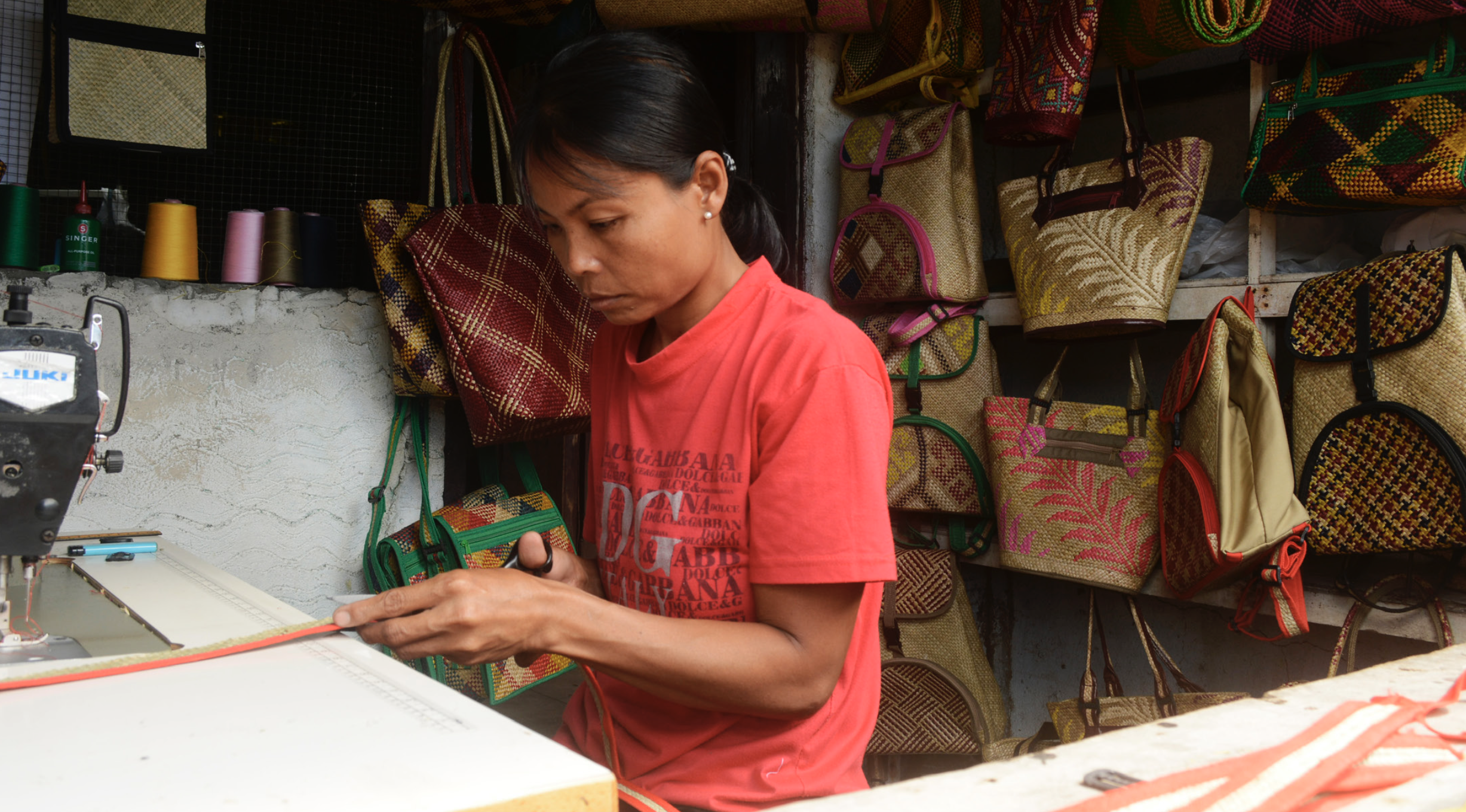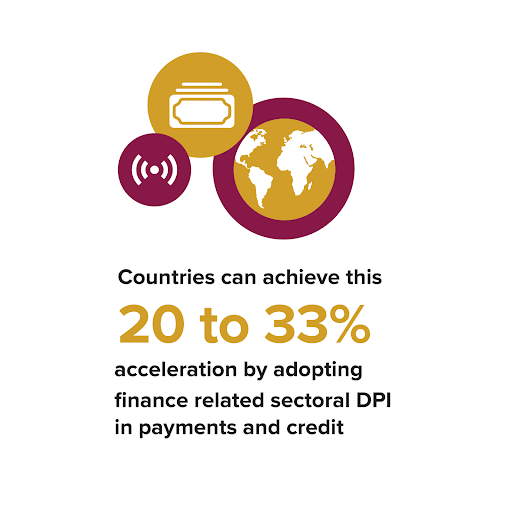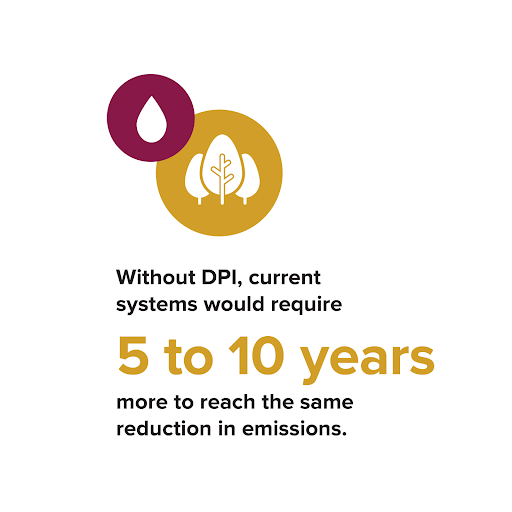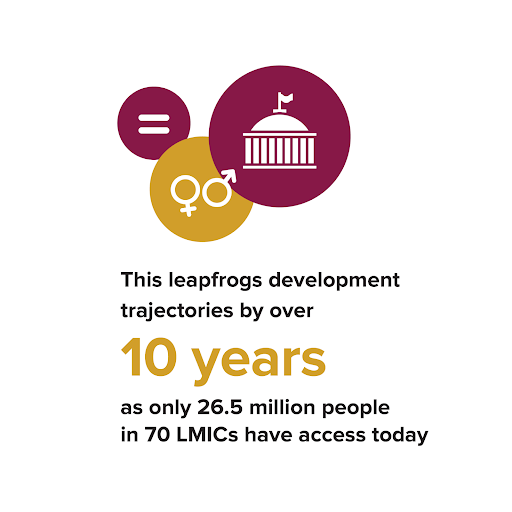The human and economic impact of digital public infrastructure
October 9, 2023

Authors: Benjamin Bertelsen (Digital Public Goods Product Specialist, UNDP’s Chief Digital Office) and Siddharth Shetty (Co-founder, Sahamati)
Given the rapid pace of digitalization in countries, it is critical that rights-based and inclusive digital transformation is embedded across technology, governance and local digital ecosystems. In light of this, implementing responsible and people-centred digital public infrastructure (DPI) ought to be a must for governments. UNDP with Dalberg Advisors conducted research to assess the potential impact of DPI by 2030 across the finance, climate and justice sectors in 70 low-and-middle income countries (LMICs). This blog discusses key findings and recommendations for LMICs looking to implement and scale DPI for greater development impact.
Why digital public infrastructure?
Open digital and technology standards and protocols are critical for enabling interoperability to ensure that digital tools and solutions work together. These are also important for moving away from the creation, entrenchment or exacerbation of siloes that limit scale and impact. Some everyday examples of the benefits of interoperability between systems include civil registration and identity; national ID systems and health ID cards; and even social protection registries across various government ministries in a country.
Digital public infrastructure is a shared means to many ends, acting as a foundational layer that can propel a nation's digital journey. For instance, financial service providers and businesses can use nationally agreed upon data standards for digital payment to ensure secure and swift payments, which makes it easier for citizens to have access to services. Healthcare providers and social welfare services can become better integrated via open APIs and rules-engines with digital identity platforms, which ensures vital services are directed to those eligible.
Not only can governments securely exchange data with partners and other service providers, but they can also empower people to have control and provide consent over how their data is shared. This approach enhances decision-making and paves the way for improved policies.
The components that power DPI are often built on open-source technologies. Open source makes the underlying code freely available for all to study and use. This is in contrast to proprietary solutions that are not publicly shared, and where innovators retain intellectual property rights. Open source can create benefits in enabling digital solutions to be adapted or modified to meet different needs and requirements. Still, it should be noted that open-source technologies may not be suitable for all contexts, and may also require different ways of working.
The impact of DPI across societies
In India, the DPI approach led the way for ID provision to more than a billion people. In Mauritius, data exchange supported better government services with more than 30 government entities sharing data safely. This provided more than 500 new e-services to people and businesses. Globally, building blocks supporting the DPI approach have contributed to the share of adults with account ownership growing from 51 percent in 2011 to 76 percent today.
However, despite increasing evidence, the development impact of DPI remains largely an under-researched area. With this in mind, we conducted research to estimate the added human and economic impact of implementing DPI across the finance, justice and climate sectors in 70 LMICs.
Here are some of the potential impacts of implementing DPI that is safe and inclusive:

Speed up economic growth by up to 33 percent - or the equivalent of two to three years of growth – by implementing DPI in the financial sector. DPI can accelerate and deepen the range of digital financial services. For example, countries are leveraging DPI to improve the financial inclusion of the nearly one in three adults who still lack access to a bank account - including Togo, which has expanded its social protection systems using open AI algorithms and models to identify vulnerable populations and provide contactless social protection payments. Using a DPI approach can also lead to inclusive economic growth, expand access to new types of financial services such as digital payments, tackle corruption and strengthen the economic resilience of households.

Mitigate the equivalent of five gigatonnes of carbon dioxide by 2030, and accelerate emissions control efforts by five-to-ten years. DPI in the climate sector can bring benefits to carbon offsets and trading, land mapping, and weather information and monitoring – founded on building and sharing open datasets and coordinating cross-border digital and other efforts. For example, the ‘Platform for Voluntary Bilateral Cooperation’ uses the DPI approach with open components that tracks carbon credits and enables credit transfers in an efficient and transparent manner between host and buying countries.

Bring judicial services to people at least 10 years sooner through introducing DPI focused on justice. DPI can accelerate digital transformation within the justice sector, increasing and enhancing service provision. Currently, only around nine percent of people that need to access formal judicial processes and support are able to do so. Open digital solutions are still absent in many parts of the justice sector and, where present, have generally taken longer to develop and deploy. However, countries have started to use DPI-like approaches to support processes such as scheduling trials and to provide alternate mechanisms for conflict resolution. By implementing DPI in the justice sector, countries can lower legal costs, reduce corruption and shorten the average time of civil cases. They can also expand the efficiency and effectiveness of judicial systems – with positive impact on wider society.
Overall, DPI implementation across sectors could allow for faster adoption of services, improved inclusion and transparency (and reductions in corruption), and increased efficiencies compared to siloed or proprietary solutions.
Some actionable recommendations to move forward
To realize these benefits, countries need to enable the implementation and scaling of several DPI components that include:
- Shaping a local digital ecosystem to drive the development of DPI. DPI cannot be sustained or flourish in a vacuum; it requires the combined efforts of the public and private sectors – and civil society. Governments can create policies and regulations to encourage digital development, and build digital skills and capacities across society. In turn, the private sector (and other innovators, including in academia) should be supported to develop the skills, knowledge, and expertise required to build digital solutions that support and leverage DPI.
- Strengthening the capacities and capabilities of the public sector for implementation and scaling of DPI. Digital solutions alone are not sufficient if governments are not aware of them – or able to implement them. Policymakers, service designers, and other civil servants need to be supported to build understanding of the role and potential of DPI in achieving key development outcomes. This should also be part of a broader process of digital transformation that leverages digital as a key tool for public service delivery – founded on principles of openness, interoperability, and inclusion.
- Promoting increased knowledge sharing and technology exchange among countries. As a toolkit of digital components and solutions, DPI can be implemented in different contexts. This provides an exciting opportunity to share learnings between teams, departments, governments, and countries – accelerating digital development by reusing and amending proven technical components. This includes from the experience and implementations of countries such as Estonia, India, and Ukraine that have been forerunners in DPI - and who have achieved positive outcomes in terms of innovation and inclusion.
At the midway point of the 2030 Agenda for Sustainable Development, progress is slowing – and across some targets, reversing. Millions more people risk being pushed back into poverty, and the impacts of climate change are worsening. Digital tools and technologies can play a valuable role in getting countries back on track, but only if these approaches are applied in an inclusive, sustainable and comprehensive way.
This is the focus of DPI: shaping and ensuring good governance of digital building blocks to unleash an ecosystem of public and private actors that deliver digital services at the largest scale. And to support and catalyze vibrant and dynamic innovation ecosystems of businesses, civil society organizations, and other innovators. By applying DPI across economies and societies, and by using DPI to address and tackle sector-specific priorities and challenges, countries can accelerate their growth and development – with positive impacts for people, the planet, and prosperity.
Read the full report and learn more about how UNDP is working to support countries in their DPI journey.
UNDP would like to thank the research partners at Dalberg Advisors for their collaboration on this report.
. . .

 Locations
Locations